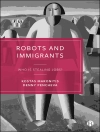Welche Auswirkungen hat die Größe junger Alterskohorten auf die Arbeitsmarktergebnisse dieser Gruppen? In vier Essays untersucht Duncan Roth diesen Zusammenhang auf regionaler Ebene mittels verschiedener mikroökonometrischer Methoden. Betrachtet werden die Löhne, die Höhe von Beschäftigung und Arbeitslosigkeit sowie die Dauer bis zur ersten Beschäftigung nach dem Eintritt in den Arbeitsmarkt. Die einzelnen Komponenten der Arbeit bauen auf dem aktuellen Stand der Literatur auf und behandeln verschiedene Aspekte, die aus Sicht des Autors bisher nicht ausreichend adressiert worden sind.
Table des matières
Acknowledgements
Einleitung – German Summary
Problem statement, structure and contribution of the dissertation
John Moffat and Duncan Roth
The cohort size-wage relationship in Europe
(published LABOUR: Review of Labour Economics and Industrial Relations, 2016, 30 (4): 415-32)
Abstract
1 Introduction
2 Estimation
2.1 Data
2.2 Empirical model
2.3 Identification
3 Results
4 Conclusion
Acknowledgements
References
Appendix
Supplementary material
References
Alfred Garloff and Duncan Roth
Regional population structure and young workers’ wages
(forthcoming in U. Blien, K. Kourtit, P. Nijkamp and R. Stough (eds): Modelling Aging and Migration Effects on Spatial Labor Markets, Springer)
Abstract
1 Introduction
2 Population structure and wages
3 Youth-population structure in Western Germany
4 Empirical analysis
4.1 Data
4.2 Sample and descriptive statistics
4.3 Empirical model and identification
5 Results
6 Conclusion
Acknowledgements
References
Appendix
Supplementary material
References
John Moffat and Duncan Roth
Cohort size and youth labour-market outcomes: the role of measurement error
(forthcoming in Economics Bulletin)
Abstract
1 Introduction
2 Literature review
3 Empirical analysis
3.1 Data
3.2 Variables and sample
3.3 Model
4 Results
5 Conclusion
Acknowledgements
References
Appendix
Supplementary material
References
Duncan Roth
Cohort size and transitions into the labour market
Abstract
1 Introduction
2 Literature and hypotheses
3 Empirical analysis
3.1 Data
3.2 Sample and variables
3.3 Model
4 Results
4.1 Baseline results
4.2 Discussion of the hypotheses
4.3 Alternative explanations
4.4 Inclusion of individuals with zero search duration
5 Conclusion
Acknowledgements
References
Appendix
Supplementary material
References
Abstract
Kurzfassung












